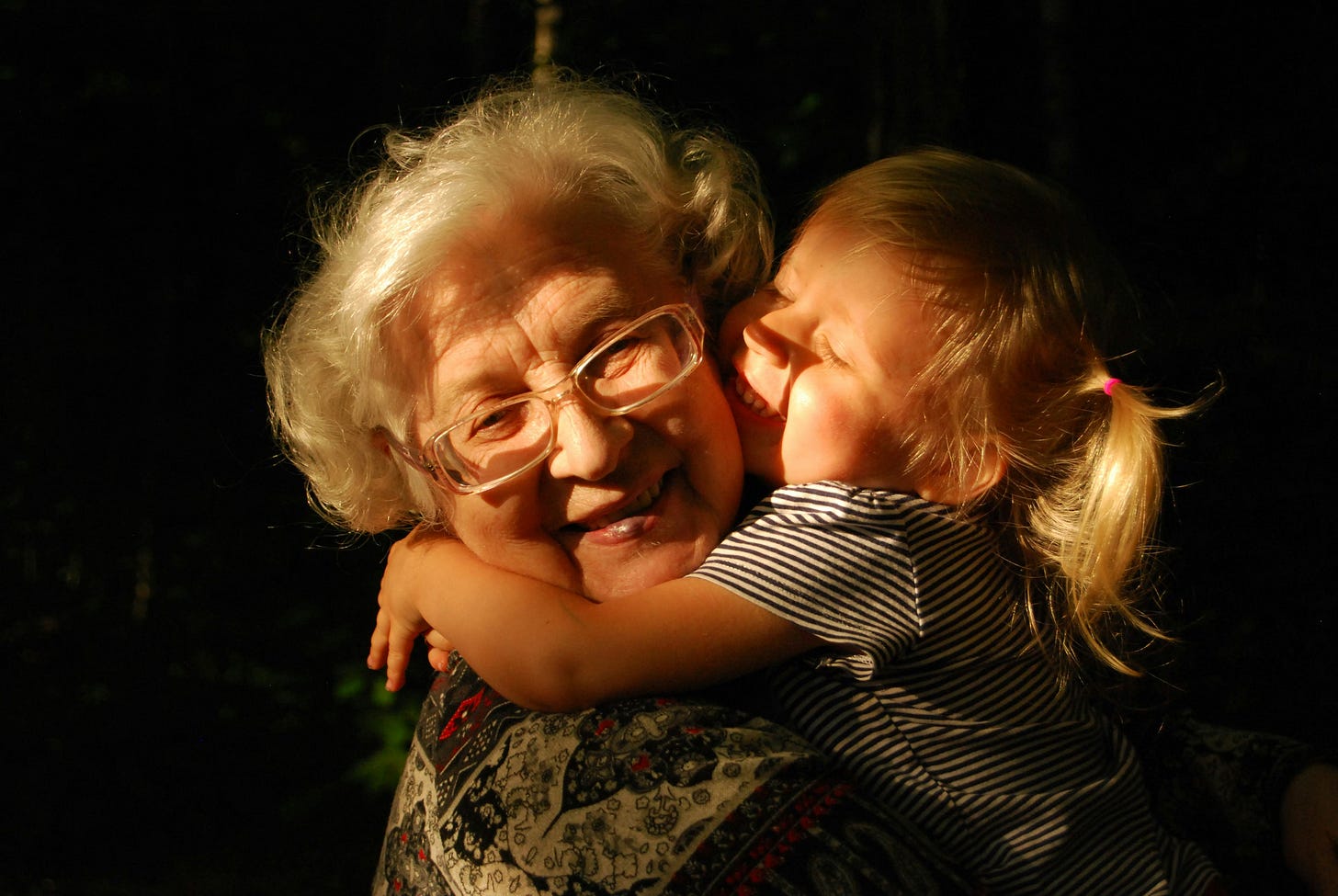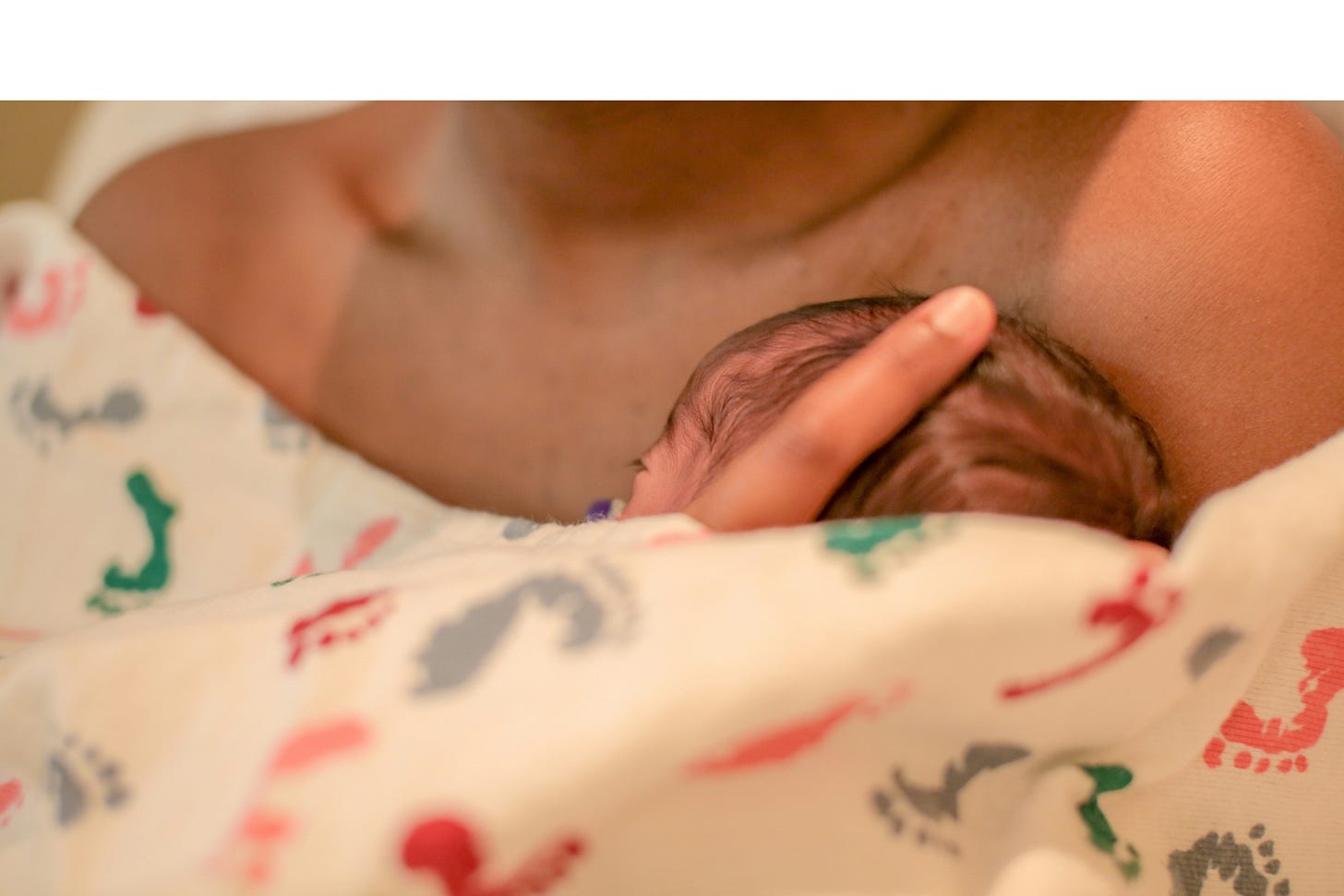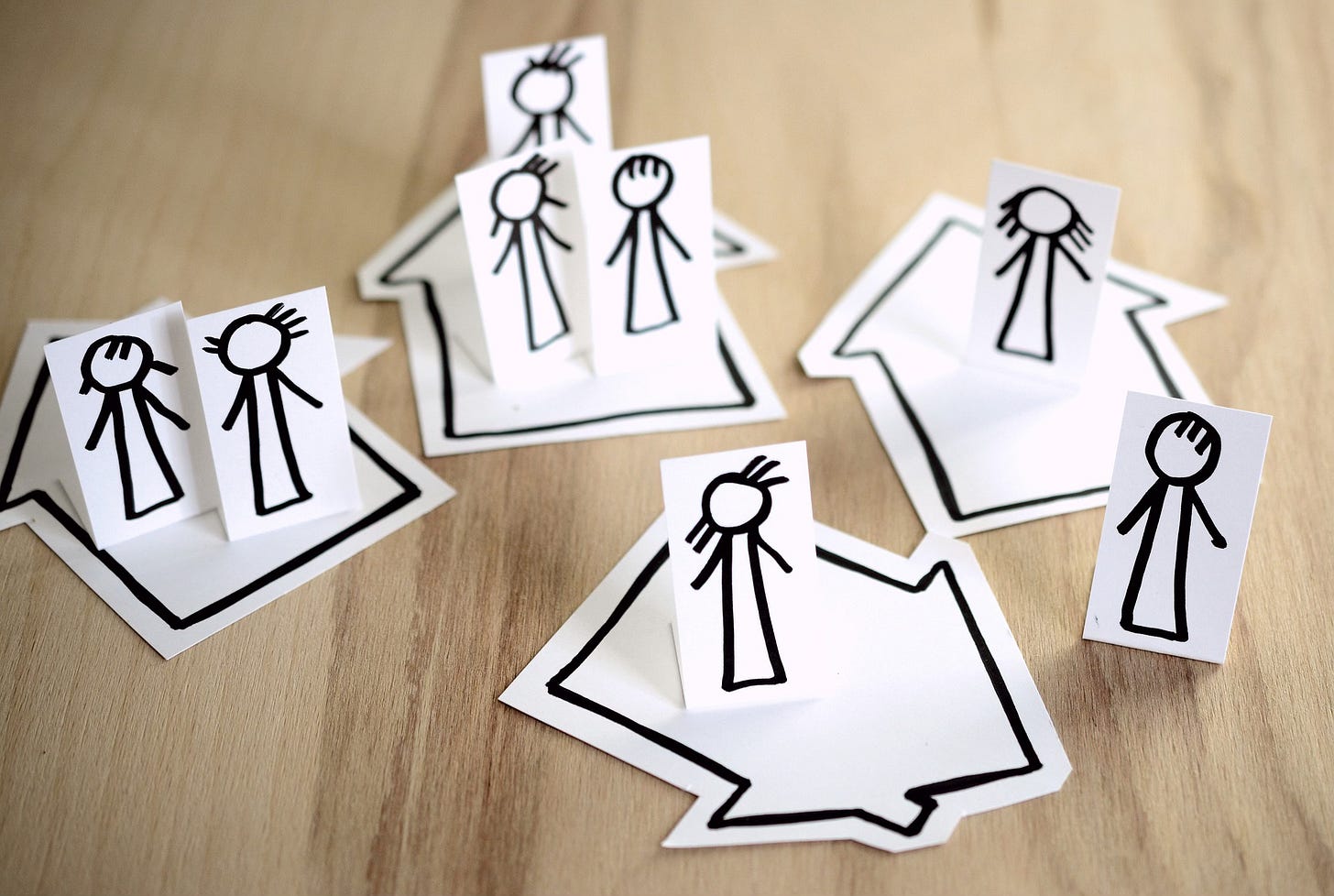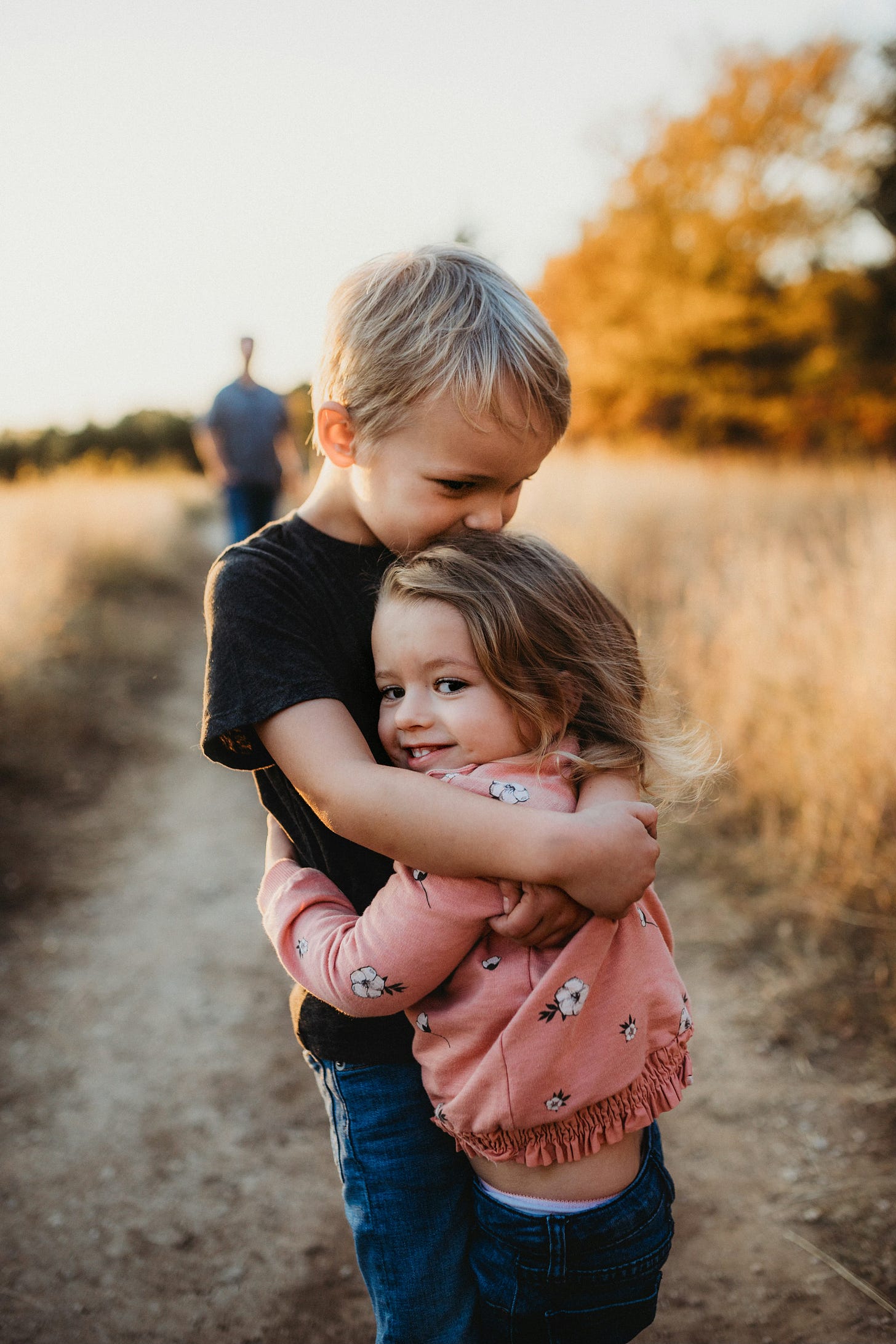Urgently Needed: Real People and Real Hugs
by Anna Atsu
If you were born in the modern era, and I believe you were because you aren’t dead yet, you were probably introduced by your parents, doula, midwife, or a doctor to a practice called ‘skin-to-skin first contact’.
When you will be dying, hopefully, you will have someone in whose arms you could give your last breath.
Let's assume that you spend the first minutes and the last minutes of your life in someone’s arms. This is the front and back cover of your book. Your book “Spine” only contains your name and the dates of your lifetime.

Times change, the way a book cover looks changes, but the design of our needs doesn’t change. We need real feelings and real relationships (real grandparents, parents, partners, children, friends, colleagues, etc.). Therefore, we need real hugs too.
Virginia Satir, a world-renowned family therapist, once said:
“We need 4 hugs a day for survival. We need 8 hugs a day for maintenance. We need 12 hugs a day for growth.”
Virginia Satir
I am far from giving anyone satisfaction to make up numbers, but here I am asking myself, “How to make those numbers?” It is really hard to reach the high end of the ‘survival level,’ and certainly, it is not a high fashion today.
But these words made me think about our fundamental needs for simple touch, hugs, never mind intimacy. Yes, our main issues are not a “contracting economy” or even a “crawling economy” but modern loneliness. Watch Esther Perel, psychotherapist, and author briefly talk about it:
Esther Perel on "Modern loneliness masking as hyper hyper connectivity"
Let me disagree with probably the most famous quote of one of the greatest and most influential filmmakers of all time:
“We're born alone, we live alone, we die alone. Only through our love and friendship can we create the illusion for the moment that we're not alone.”
Orson Welles
Of course, we understand where Welles was coming from, but we also know that Welles felt very alone and independent in most parts of his life, for example, after his mother’s death, during the three years that Orson lived with his father, “everyone wondered who took care of whom," wrote biographer Frank Brady.
Of course, I am not denying the global epidemic of loneliness and the fact of “assisted living.”
Personally, I probably broke a world record for how long a person can keep herself before “touching” social media. Why? I knew about the phenomenon of “loneliness on the net” in 2001 when a book of the same title came out in my home country. The author of the book was also the author of the computer program, naming tool for organic substances in the IUPAC nomenclature. I don’t remember going to another meeting with the authors, including a web chat before. I’ve read the book, of course, but I can’t recommend it, even though there was a film based on it later. What I was amazed at, was Wisniewski’s, the Doctor of Sciences, explanations of love chemistry from a chemical point of view. Once you know it, you understand what to expect from relationships. And the book… let’s just say that the guy spent too much time on the computer watching adult content…

So I still don’t watch TV displaying war news, and I am only crawling on social media. Times changed and the way we get news, chat with people, and exchange information evolved, in some aspects, it is for the benefit, in some to their detriment, but I understand that staying away from it for any longer won’t guarantee being safe from loneliness, doesn’t guarantee more hugs in real life either.
Times changed. In schools, we are encouraged to keep our hands to ourselves; professional boundaries at work keep us at a distance. We need to obtain consent before touching anyone. Times changed, but we will never change the fundamental need for real feelings, real friends, and real hugs.
What you remember the most are Sunday family dinners, real plays with friends, fights and making peace, real people at school, romantic moments, first kisses, and first break-ups. They don’t happen online. True, the next generation will have a much shorter memory!
Of course, we are busy, living in big agglomerates, often in very small groups if not by ourselves. We went through the Covid pandemic when in its hardest moments the screen might have been the only thing reminding us of another human’s existence. The pandemic released its embrace: Children don’t need to pull off their parents’ masks to give them a kiss at the airport, and people can break social distancing and hug, but still, we are not seeing our friends and extended family daily, we don’t see enough people who we might hug.

So, duplicate hugs with your children. Share hugs with family and friends to maintain and to grow, don’t count on the few hugs only towards the end of the tax year when you will be broken and looking “for survival.”
As much as the world is standing or crawling on its feet of the economy on the hard ground of reality, its brain stays focused on numbers, its arms embrace thriving technology, its heart beats for humanity and it is that soothing, steady beating that needs to be shared until the very last moment of its existence when the numbers won’t count and the only thing that will count will be real proximity.
When you will be reflecting on your life in its winter days, won’t be the posts you’ve read or created, not films you have watched, not even the books you have read or have written but real people, real feelings, and real hugs.
Reflect on the tally:
Bonding:
Skin-to-Skin Contact: Fosters an immediate and strong emotional bond between newborn and mother through physical closeness, releasing oxytocin for enhanced maternal-infant connection.
Hugs: Promote bonding by releasing oxytocin, contributing to emotional well-being and creating a sense of connection between individuals.
Temperature Regulation:
Skin-to-Skin Contact: Regulates the baby's body temperature, with the mother's body adapting to provide warmth or cooling as needed for the baby's comfort.
Hugs: While not directly regulating temperature like skin-to-skin contact, hugs can provide a comforting and warming effect, contributing to a sense of well-being.
Breastfeeding:
Skin-to-Skin Contact: Facilitates early breastfeeding, increasing the likelihood of successful latch and promoting the establishment of breastfeeding with essential nutrients and antibodies.
Hugs: While not directly linked to breastfeeding, hugs can contribute to a positive emotional environment, which may indirectly support the breastfeeding experience.
Physiological Stability:
Skin-to-Skin Contact: Stabilizes heart and respiratory rates in newborns, regulating physiological responses and promoting a sense of security.
Hugs: Trigger a relaxation response, reducing stress and cortisol levels, which can contribute to overall physiological stability and well-being.
Stress Reduction and Emotional Well-being:
Skin-to-Skin Contact: Reduces stress hormones for both mother and newborn, aiding in the adjustment to the new environment and contributing to a positive postpartum experience.
Hugs: Known to reduce stress by lowering cortisol levels, while also stimulating the release of endorphins for an improved mood and emotional well-being. Both promote a sense of trust and connection between individuals, strengthening relationships.
And if you want to explore a bit further:





